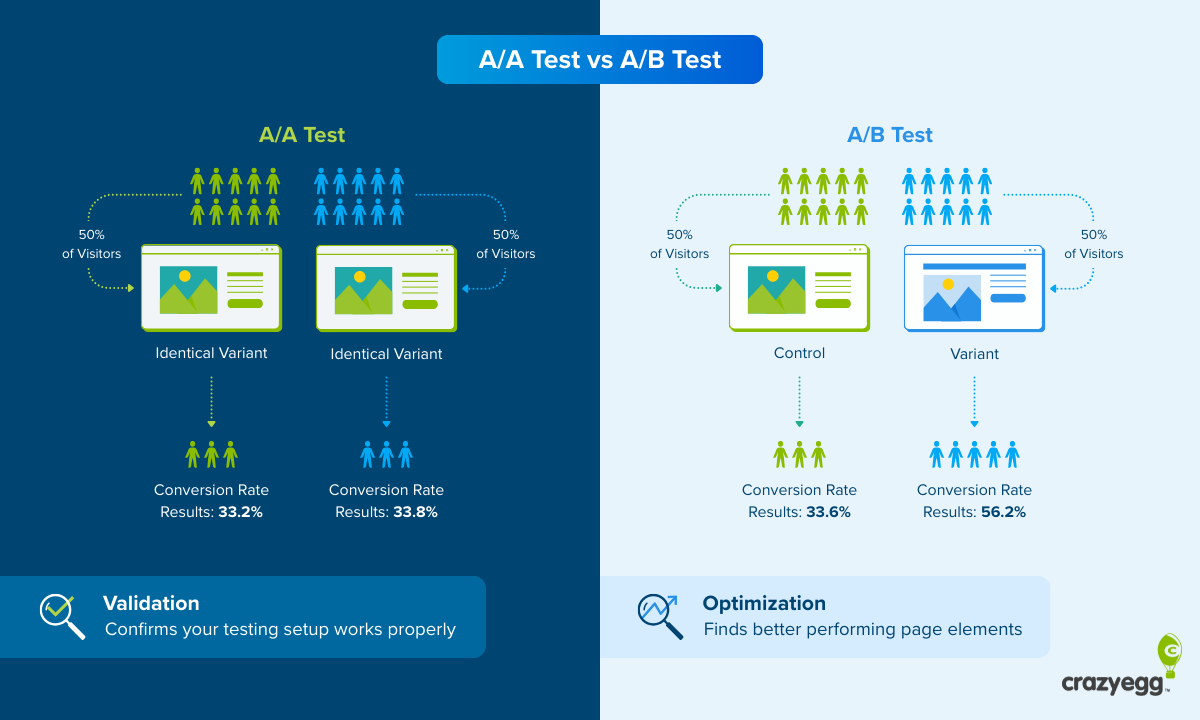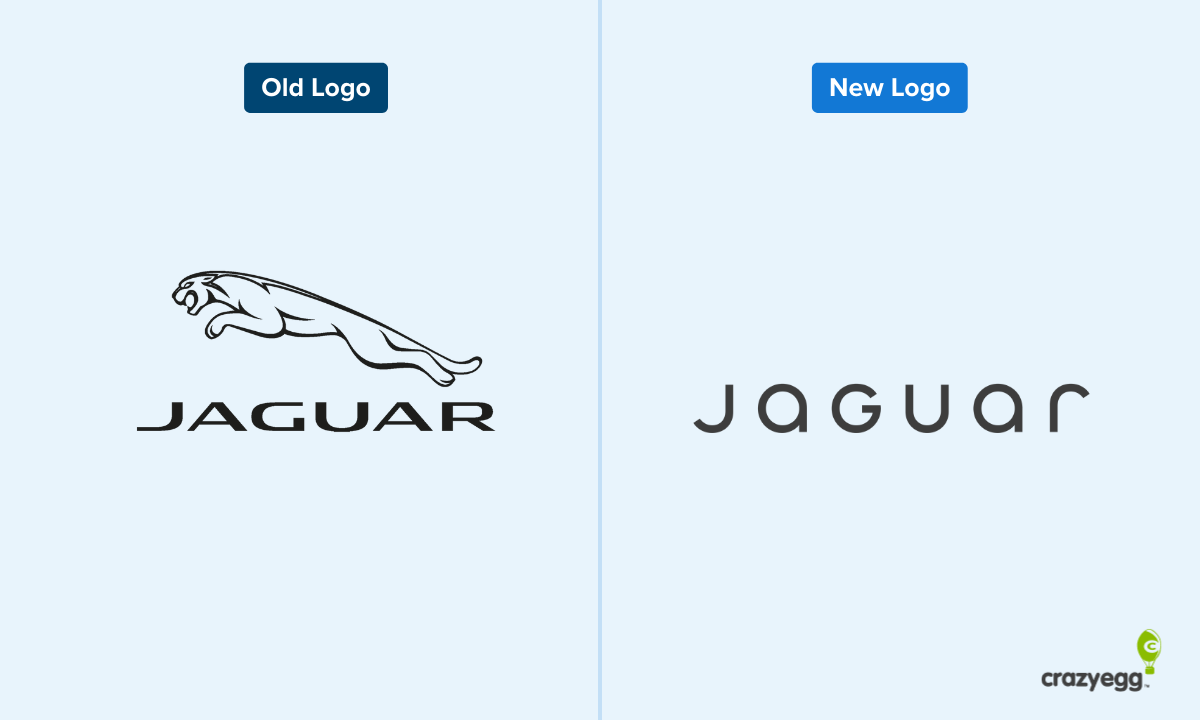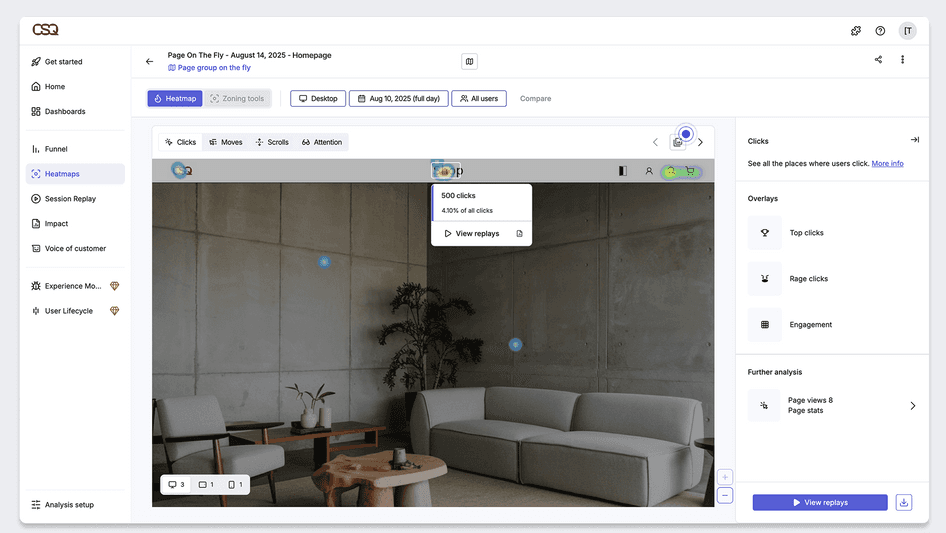A landing page is a focused and intentional space designed to offer web visitors one clear message or course of action. Usually, the goal is to guide them to a conversion, like signing up for a newsletter, buying a product or service, or learning more about a brand.
The best way to learn how to make a top-notch landing page is to see and study the greats. Here are 6 landing page examples from different industries to admire and learn from.
1. ExpressVPN

ExpressVPN’s landing page is laser-focused on one thing: urging visitors to sign up for a risk-free trial.
You’ll notice the headline instantly communicates that there’s no risk for the user, and there’s a clear benefit, too—a VPN that works smoothly and extra months free of charge.
The landing page features more than one CTA button. But each one is positioned at key scroll points and leads to the same place: the pricing page with the aforementioned deal.

The landing page also features trust-building social proof, including:
- Reviews pulled from the Apple App Store and Google Play Store
- Star ratings for both app stores
- An “as seen in” section featuring big names like Vox, the BBC, and TechCrunch
- Social media comments about ExpressVPN
- Snippets from tech reviews on sites like PCWorld and Business Insider
You also immediately find out how many servers ExpressVPN has—105, a meaty list of countries you can explore the web from. The copy says, “Our network of high-speed servers puts you in control. Appear to be in any of 105 countries worldwide and enjoy online freedom anywhere.”
See how customer-focused that is? There’s no list of technical specifications to drag down the page. Just smooth, streamlined nudges toward the ultimate goal.
Key takeaway from this landing page example:
- Strip away distractions and lead with one bold promise—then back it up with social proof and a low- or no-barrier path to action. If you’re building a landing page, make it clear, confident, and relentlessly focused on what the user gains, not what you offer.
2. DoorDash

DoorDash’s Dasher signup landing page makes me want to consider signing up to be a Dasher, even though I am firmly uninterested in the side gig.
But that’s how compelling the landing page is.
First off, the headline—“Earn with the best”—catches my attention. Earn? Yes please! The best? I imagine working with a group of serious, dedicated folks carrying red bags of steaming food to grateful recipients.
The photo of Dasher Alfonso from Davidson, NC on the landing page helps create this friendly, noble image in my head.
Signing up for the opportunity from the landing page seems easier than applying for a job just about anywhere else in the universe. All I have to do is enter my zip code? Sweet!
Just below the signup, more benefits: work when you want. Set your own course. And most tantalizingly, Start earning quickly.
I’m starting to get genuinely tempted.
Scroll further down and you get information about how DoorDash keeps Dashers safe. You get actual screenshots of how much money you can expect to make between base pay, tips, and promotions.

The tone is friendly, with questions written as if the web visitor herself were asking them and a benevolent DoorDash instructor were answering. Then there’s a section on Dasher gear, a simple trio of requirements, and a list of FAQs.
All of this, just to encourage signups.
I love the amount of information on this page, and I especially love the way it’s delivered in easily digestible bites. DoorDash sells potential Dashers flexibility, control, and speed of approval and payments, and it sells these features well.
If you see me on a bike with a big red backpack on my shoulders in the near future, know that this very landing page is what sold the gig for me.
Key takeaway from this landing page example:
- If you want to drive signups for a side gig, sell the lifestyle, not just the logistics. DoorDash’s page doesn’t just explain how to become a Dasher—it makes you want to. Even if you know, deep down, that you actually don’t want to. Use real faces, emotional language, and quick wins (like “start earning fast”) to make your offer feel immediate and worth acting on.
3. Stripe

Stripe’s use case-focused landing page for the Creator Economy is confident and clear about what creators can do with this headline: “Unlock creator monetization on your platform.”
Then, the landing page copy tells you exactly how Stripe does this—by making it easy to onboard and pay creators for their work. The mockup of Stripe Express gives you visual context in a snap, showing what creators will see: their balance, earnings, and activity.
The landing page also makes it obvious that the page is for decision-makers at startups, apps, and any marketplace that wants to serve a growing creator base. AKA, whatever the next TikTok is.
Stripe offers instant social proof with the logo drop of trusted platforms like Substack, X (formerly Twitter), and Clubhouse. These brands also give you an idea of who the ideal Creator Economy client is for Stripe.
Now, while dual CTAs aren’t what I always recommend, Stripe uses them well on this landing page example. You can pick two actions: “Contact sales” and “Start now”. If you’re an enterprise brand, you’ll want to contact the Stripe sales department. If you want to create a Stripe account and start poking around the platform, the “Start now” button takes you to the right spot.
This dual CTA works because it essentially points users toward one action—eventual purchase of Stripe products—but does it without being pushy. If you’re ready to buy, the button is there. If you just want to explore and learn more first, that button is available too.
Key takeaway from this landing page example:
- Speak straight to your ideal user and meet them where they are. Stripe’s page works because it clearly defines its audience, shows exactly how it helps them succeed, and gives them two low-friction ways to take the next step.
4. Sunbasket

Who doesn’t want a discount on fresh, delicious meals delivered right to the front door?
Sunbasket’s landing page promises all that—and then some. The colorful dishes look nutritious and mouthwatering at the same time. The form you must fill out to sign up is easy to complete with just five fields.
Below the signup, a colorful trust badge for USDA Organic certification helps reinforce the message about nutritious meals.
The familiar green badge is flanked by fun illustrations that tell you what Sunbasket delivers: easy, convenient meals you don’t have to spend hours planning, shopping for, and cooking.
Scroll down and you’ll see three photos with mouthwatering dishes Sunbasket is serving up right now. A small “selling fast!” label on one of the meals creates a sense of urgency. The yellow “Order Now” button cheerfully invites you to click.
Keep scrolling and you’ll see two ways to get your convenient meals: “Choose Easy—or Easier.” The choice is between a meal kit with all the ingredients you need or ready-made, pop-them-in-the-oven dishes.
You can even mix and match. Yes, please.
The only thing I don’t like about this landing page is that when a popup appeared, I had two choices: to sign up for additional discounts or click a button saying “I don’t like discounts.”
This obvious manipulation left a sour note on an otherwise bright moment with Sunbasket’s landing page.
Avoid it at all costs when you create landing pages and popups.
You don’t need it.
Just trust in gorgeous imagery, tight, user-focused web copy, and compelling headlines, and your landing page is sure to convert.
Key takeaway from this landing page example:
- Let your product and experience do the selling. Lead with irresistible visuals, keep the signup easy and stress-free, and focus on real benefits for new users. And don’t ruin the vibe with manipulative popups—confidence converts better than guilt-tripping. Every time.
5. Toggl Track

Toggl Track’s demo landing page wastes no time with small talk. It gets right to the point with its value proposition: a free demo for teams of 15 or more. That hook is front and center in big, friendly type that emphasizes the words free demo with a pop of color and wonky lettering that matches the playful, approachable Toggl brand vibe.
On the left, you get a clear list of what to expect if you decide to sign up for Toggl Track: personalized onboarding, workflow integrations, team productivity insights, and custom pricing conversations.
It’s detailed, but still easy to scan, especially with the help of playful pink checkmarks to guide your eye.
The major standout—and what caught my attention right away—is the firm anti-surveillance stance in the middle of the page. Toggl makes it clear that if you want spyware to micromanage your team, you should go elsewhere.
This type of clarity does two things:
- Builds trust with users whose values align with an anti-surveillance stance.
- Weeds out users that do want that type of surveillance and wouldn’t be ideal customers anyway.
It might seem bold to put something like this on a landing page, and it is. But it’s also an excellent way to instantly improve the quality of your leads.
To the right of the page, the form is well-balanced and not overwhelming. It asks for just enough information, all directly tied to your team size, tracking needs, and location. The pastel palette softens impact of the form’s businesslike questions, and the bright pink “Submit” button feels warm and inviting.
At the bottom of the page, trust badges in logo form from well-known companies like Amazon, Uber, and LinkedIn offer plenty of credibility. So do the star reviews from common review aggregator sites, along with the “Leader” badges from G2, though they’re from 2023—updated badges would be helpful here.

But that’s a quibble, really. Overall, I love the look, strength of stance, and feel of this landing page example.
One more thing: the photo from a happy client team—RogueMark Studios—adds another layer of authenticity to the social proof. Definitely include images like this when you can.
They’ll become more important as AI-generated everything—even headshots!—infiltrates the web and makes it a thousand times harder for users to know what to trust.
Key takeaway for this landing page example:
- Don’t just offer a free demo to any and everyone who lands on your landing page. Instead, be like Toggl and make it clear who your product is for, why it matters, and what values your brand stands behind. Toggl’s page works because it sells a solution and a philosophy: a user-first, anti-surveillance, and genuinely helpful one. If your product has an edge that sets it apart ethically or culturally, go ahead and lean into it. You just might be pleasantly surprised at how many more leads end up converting.
6. Acorns

Full disclosure: I am an Acorns user, and I do not get anything in return for featuring them on this list.
I just love their marketing, and especially this co-branded landing page between Acorns and Morning Brew.
The headline shows you exactly what you get when you sign up for Acorns: an easy, automatic way to invest your spare change.
This is the exact concept that drew me in to become an Acorns customer, and the company seems to know it’s quite the carrot.
The subheading about effortlessly building wealth is a direct callout to Morning Brew’s business-savvy audience: busy professionals who want to elevate their financial habits without spending tons of extra time doing it.
Visually, the page is clean, super on-brand, and playful. The oak leaves, squirrels, and—of course—acorns suggest that investing money can be something anyone can do, and maybe even have fun doing, too.
A mockup of the Acorns mobile app reinforces how easy (and motivating, with that graph!) it is to use.
I also appreciate how the CTA button—Get my $10 bonus—is paired with a three-step breakdown of how Acorns works. A quick tap on the link, a fast account setup, and a $5 minimum investment = that sweet $10 bonus.
Key takeaway for this landing page example:
- Don’t be afraid to run a co-branded campaign with an influencer or related brand in your industry. The pairing of Acorns, a fintech service, and Morning Brew, a business talk show, is perfectly complementary. Match your messaging to both your audience and the folks who engage with the brand you’re partnering with, the way Acorns does here.
What Makes the Best Landing Pages Convert the Most?
To create a compelling landing page, focus on these five core steps:
- Craft a clear, benefits-focused headline and web copy. Communicate what the visitor gets, and do it quickly. It should take just a split second for them to understand what they get in return for their sign-up or purchase.
- One strong CTA. Avoid the temptation to ask your web visitors to do multiple things, like sign up for your new email list and buy your newest product. Instead, keep the landing page focused on one goal.
- Trust signals. Build trust with the people who will visit your page by adding testimonials, reviews, and relevant badges. A veterinarian accredited by the American Animal Hospital Association could add that trust badge to its landing page, for example. Just make sure you have permission to use the trust badges you put up.
- Mobile-optimized design. Choose a landing page tool that automatically optimizes the page for fast loading and responsiveness on mobile.
- A/B testing. Landing pages may be more streamlined than full websites, but that doesn’t mean they’re a set-it-and-forget-it. Continuously test headlines, images, and CTAs to make sure you’re getting the best possible results.
What are the Best Tools to Set Up Your Own Landing Page?
Ready to get started? Here’s a list of our favorite tools for creating high-converting landing pages.
- Unbounce. Great for marketers who want powerful A/B testing and customization.
- Leadpages. User-friendly and ideal for quickly creating pages with easy-to-use templates.
- Webflow. Offers more control over design with visual development tools.
- Instapage. Excellent for collaboration between team members, plus offers advanced analytics.
- ClickFunnels. Best for integrating landing pages as part of a full sales funnel.
- Carrd. Lightweight and super affordable for simple, one-page sites.
- HubSpot. Includes robust landing page tools as part of its broader marketing suite.






